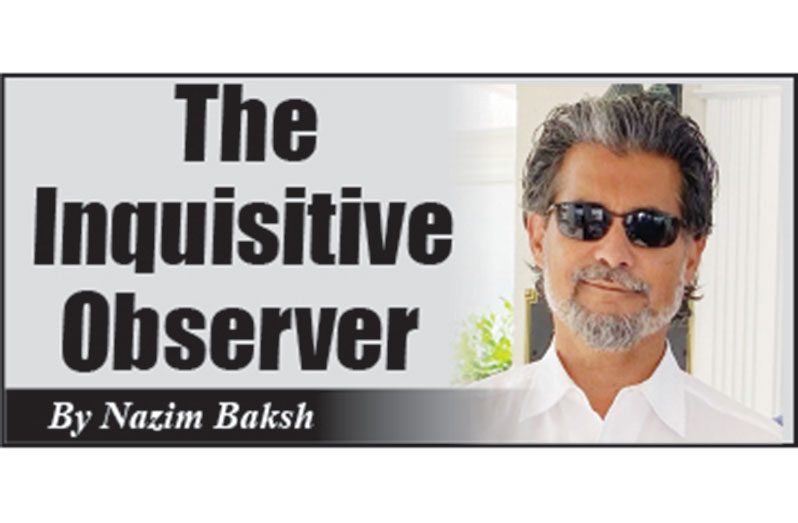FAKE news is more than just a nuisance; it’s a global contagion. Fuelled by the viral nature of social media, disinformation spreads faster than facts, distorting reality, sowing division, and fuelling violence.
We don’t have to look abroad for evidence; we need only reflect on what transpired in the hours and days following the tragic death of Adrianna Younge. With a sizable share of our population relying heavily on smartphones for news and information, it’s little surprise that falsehoods flourished, and misinformation outpaced facts following the death of the 11-year-old.
That all may come across as too abstract. The reality is that disinformation surrounding this child’s death sparked public hysteria, and that hysteria ignited protests across the country. But even that feels too detached. The truth is, people died. Many others were injured, arrested, and charged with destroying property, and we are not out of the woods yet.
Disinformation thrives when we choose to ignore facts and allow emotions to drive our actions. You can assemble the most qualified forensic pathologists in the world to conduct a thorough autopsy to determine the cause of death, and still, the epidemic of outlandish claims will spread like wildfire.
There are several reasons for this trend. For one, newsrooms around the world are shrinking, leaving fewer journalists to uphold long-established guardrails; a mix of ethical codes, verification protocols, and editorial oversight designed to ensure accuracy and accountability.
In Guyana, a growing number of spirited “citizen journalists” operate as if they’re professional reporters, but without any of the guardrails. Last Monday, I watched a live interview streamed from the grounds of the Georgetown Public Hospital Corporation (GPHC). The interviewee was intoxicated. The so-called digital reporter, one of many who’ve taken up the mantle of civil journalism in Guyana, warned his subject not to use profanities and went on to scold viewers who flooded his comment section with racist and hateful messages. There were hundreds. He then threatened to take action against them; perhaps his pre-emptive excuse should Facebook’s Community Enforcement Standards team come calling.
With user-generated content now pervasive, public institutions must remain alert. And that leads to the second, more sobering challenge: In Guyana, trust in key public institutions is badly frayed. If a poll were to be conducted, it would almost certainly reveal widespread public distrust of the Guyana Police Force (GPF). A vast number of Guyanese don’t believe the GPF has been living up to its motto to serve and protect.
Restoring public trust in the GPF; a cornerstone of national security, requires two key actions: Sustained community engagement, and a credible, transparent communications strategy. Only days ago, President Irfaan Ali and his Cabinet publicly acknowledged the urgency of better public messaging by the GPF. By that, they mean sticking to the facts without compromising the ongoing investigation. It has been proven, time and again, that when facts are presented, gossip, speculation, and hearsay are pushed to the margins of society.
In the case of a dead child in a swimming pool at a hotel in Tuschen, the GPF communication branch went AWOL. It was shocking, if not downright embarrassing. In a country on a fast track to prosperity, I am curious to know what happened to GPF’s communication team.
Community engagement is just as vital as clear communication when it comes to building public trust in Law Enforcement. Yet, the Guyana Police Force often appears to operate in isolation from civil society. There is ample research demonstrating that policing becomes significantly more effective when police forces actively engage with community stakeholders. Let me illustrate with a telling example.
In 2009, leaders and parents within Canada’s Somali community began voicing their frustration over the lack of police response to a disturbing string of murders in Edmonton, Alberta. At the time I was assigned to the story, a growing number of Somali-Canadian men, many originally from the Greater Toronto area, had been murdered under mysterious circumstances. Neither the Edmonton Police Service nor the Royal Canadian Mounted Police (RCMP), incidentally, the same force now being proposed by some in the APNU+AFC to investigate Adrianna’s death, had any leads. The murder toll eventually surpassed 30.
Rather than acknowledging its investigative blind spots, law enforcement blamed the Somali community for being uncooperative, and dismissed the killings as gang-related, effectively writing them off. That indifference persisted until 2012, when Christopher Husbands, a Guyanese immigrant, opened fire in Toronto’s busy Eaton Centre food court. One of his victims was later identified as the triggerman behind the Edmonton murders. The spree ended not with policing, but by sheer coincidence.
Over several years, my reporting revealed a profound lack of trust between Somali elders and the police. A similar dynamic existed in Minneapolis, Minnesota. But there, a different approach yielded dramatic results. When Hennepin County Sheriff Rich Stanek hired just two Somali officers, the city saw a nearly 50 per cent drop in serious crime within a year.
My point is simple: When the GPF takes real steps to adopt an effective community strategy and engage civil society, we all stand to benefit, not just from better security, but from a public discourse that isn’t hijacked by rumours of obeah and jumbie.
DISCLAIMER: The views and opinions expressed in this column are solely those of the author and do not necessarily reflect the official policy or position of the Guyana National Newspapers Limited.




.jpg)









